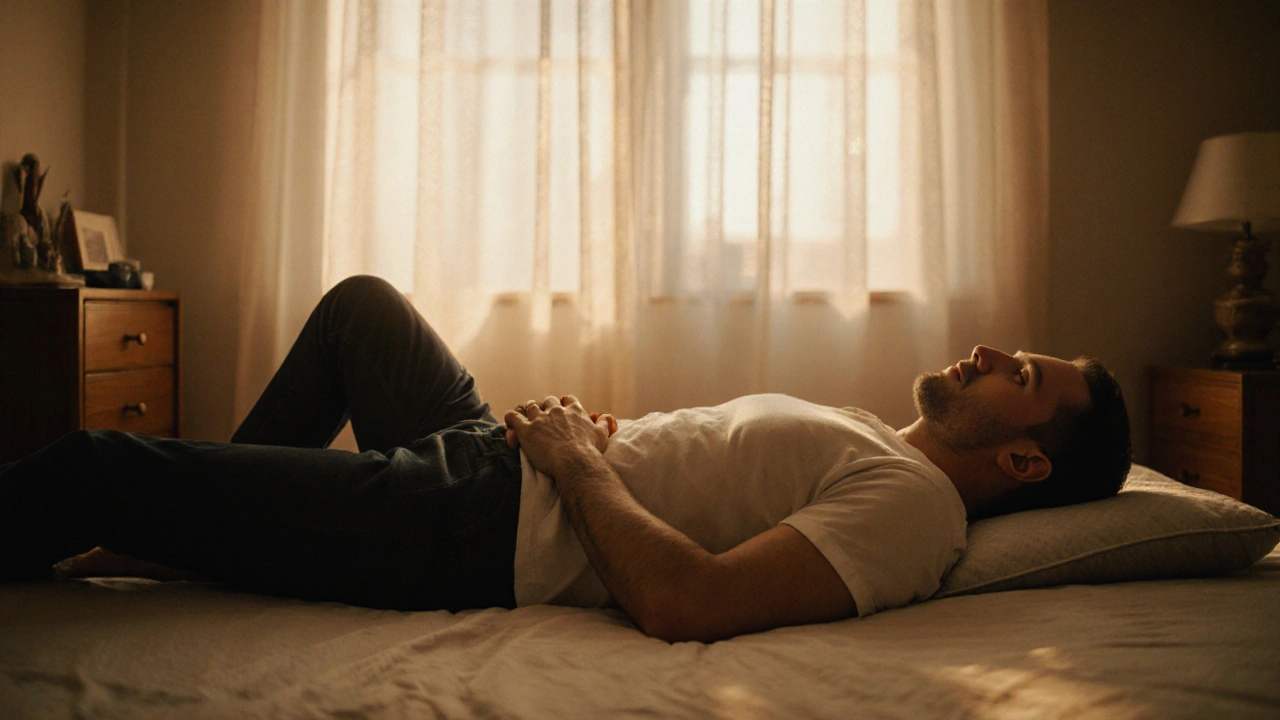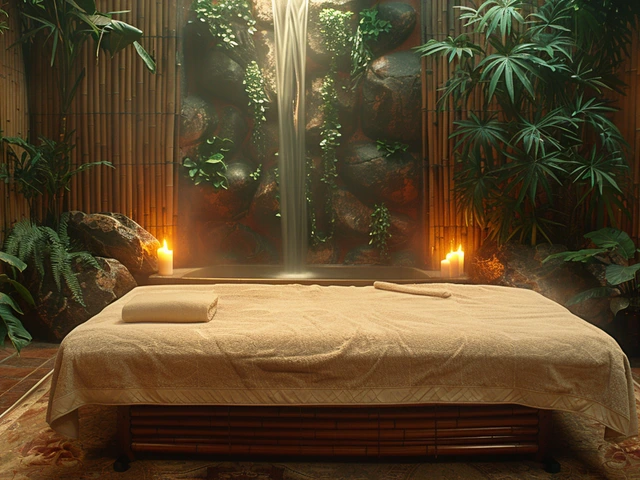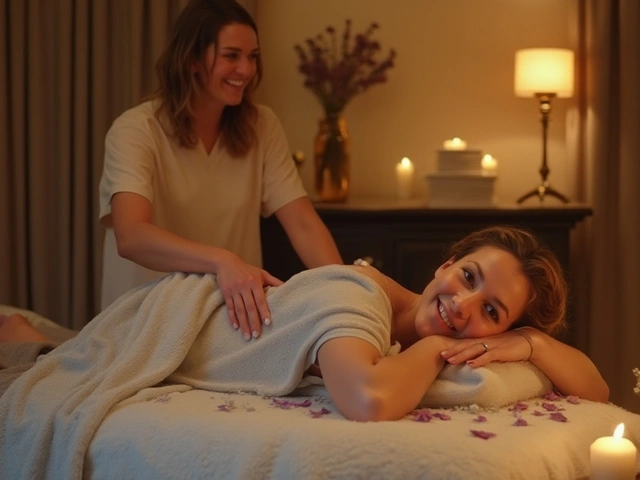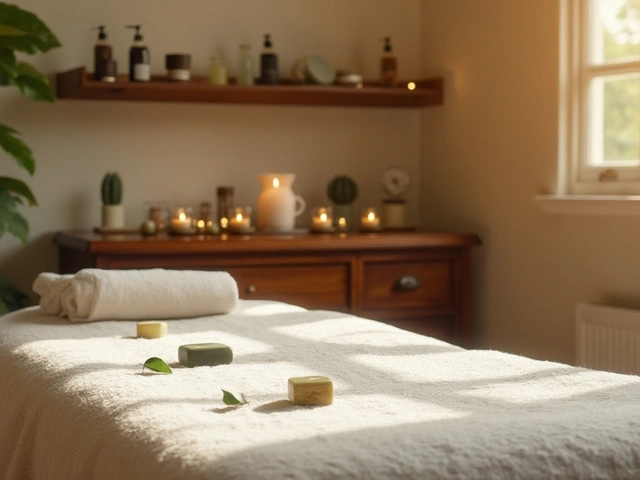Prostate Massage Progress Tracker
Your Massage Progress Tracker
Progress & Expected Benefits
Your Progress Plan
Most men don’t realize how much tension lives in their pelvic floor. It’s not just about holding it in or pushing it out when you pee. For many, this area stays clenched for years-from sitting too long, stress, or just never learning how to let go. And when the muscles there are tight, it doesn’t just affect bladder control or bowel movements. It can dull pleasure, make sex feel less intense, and even cause chronic discomfort you’ve learned to live with. Prostate massage isn’t just about pleasure-it’s a reset button for the entire pelvic region.
Why the Pelvic Floor Matters More Than You Think
The prostate is a small gland, about the size of a walnut, tucked deep inside the pelvis, just in front of the rectum. It’s surrounded by a network of muscles that control urine flow, sexual function, and even posture. When these muscles stay tight, blood flow slows down. Inflammation builds up. Nerves get compressed. That’s when you start noticing symptoms: frequent urges to pee, trouble starting urination, or a dull ache in the lower belly or perineum. These aren’t normal aging issues-they’re signs your pelvic floor is stuck in ‘on’ mode.
Studies show that up to 70% of men with chronic pelvic pain see real improvement after regular prostate massage. One 2022 study in Urology found that men who did gentle, consistent massage reported less pain, fewer nighttime bathroom trips, and better sexual sensation. It’s not magic. It’s physics: pressure and movement release tension, improve circulation, and flush out built-up fluids. Think of it like stretching a cramped muscle after a long run-except this muscle is hidden, and most men never even know it’s tight.
Prostate Massage Starts Outside, Not Inside
Too many men jump straight to internal stimulation because they think that’s the ‘real’ massage. But that’s like trying to stretch your hamstrings by pulling your foot before warming up. The first step is always external relaxation.
Begin by lying on your back. Place your hands on your lower belly, just above the pubic bone. Breathe slowly-inhale for four counts, hold for two, exhale for six. Feel the softness under your fingers. Now, gently press downward toward the tailbone. You’re not pushing hard. You’re inviting the area to soften. Do this for five minutes. You might feel a subtle twitch, a warmth, or nothing at all. That’s okay.
Next, move to the perineum-the area between the scrotum and anus. Use your thumb or two fingers to make tiny circular motions. Apply light pressure. If it feels sensitive, that’s normal. If it hurts, stop. This isn’t about intensity. It’s about awareness. Many men report feeling a strange, pleasant warmth spread through their pelvis after just a few minutes of this. That’s blood flow waking up.
Some people use warm stones or a heating pad on the lower back or tailbone during this phase. Heat helps muscles relax deeper than touch alone. A warm bath before starting also works wonders. The goal isn’t to orgasm. It’s to teach your body that this area is safe to open.
When and How to Move Inside
Once the outside feels calm-maybe after a week or two of daily external work-you can consider internal touch. This isn’t a rush. It’s a progression.
First, trim your nails. Wash your hands. Use a water-based lubricant-never oil or silicone. They’re harder to clean and can irritate sensitive tissue. Put on a clean latex glove if you’re nervous. You don’t need one, but it helps with confidence.
Now, get into a comfortable position. Lying on your back with knees bent is easiest for beginners. Some prefer lying on their side with one knee pulled up. Others like kneeling and leaning forward, resting their chest on a pillow. The key is to let your hips drop open. If your butt is clenched, you won’t get anywhere.
Slowly, gently, insert your lubricated finger-just the tip-into the anus. Don’t push. Wait. Breathe. Let your body decide when it’s ready. You’ll feel a spongy, round structure about 5-7 centimeters in. That’s your prostate. It’s not a ball. It’s more like a flattened almond. Don’t jab it. Don’t rub hard. Use a gentle, come-hither motion with your fingertip. Imagine you’re trying to scratch an itch inside, not massage a tennis ball.
Most men feel a strange mix of pressure and pleasure. Some get an erection. Some feel a tingling in their legs. Others feel nothing at first. That’s normal. The first few times, you’re not trying to climax. You’re retraining your nervous system to associate touch here with safety, not shame or fear.

Common Mistakes and How to Avoid Them
People fail at prostate massage for the same reasons they fail at yoga or meditation: they rush, they force, they expect results too fast.
- Mistake: Using too much lube or too little. Fix: You need enough to glide smoothly, but not so much that you lose sensation. Reapply as needed.
- Mistake: Trying to do it alone without preparation. Fix: Start with external work for at least a week. Then, do internal sessions only when you’re calm and not rushed.
- Mistake: Expecting an orgasm every time. Fix: The goal is relaxation, not performance. Some sessions will feel deeply pleasurable. Others will feel boring. Both are progress.
- Mistake: Doing it too hard. Fix: If it hurts, you’re doing it wrong. Prostate massage should never be painful. Mild pressure is fine. Sharp pain means stop immediately.
One man on a Czech wellness forum wrote: ‘I tried it once after a long day of sitting. I was nervous. I pushed too fast. It hurt. I didn’t try again for a month. Then I started slow-with breathing, with heat, with touch outside first. The second time, I cried. Not from pain. From relief. I didn’t know my body had been holding that much tension.’
Who Should Avoid It
Prostate massage isn’t for everyone. If you have:
- An active infection or acute prostatitis
- Bleeding disorders or are on blood thinners
- Recent rectal surgery
- Severe hemorrhoids or anal fissures
Then skip it-for now. Talk to a urologist first. Some doctors still don’t recommend it, but that’s changing. In Prague, clinics now offer prostate massage as part of pelvic health programs. In Australia, more pelvic floor physiotherapists are training in it. It’s not fringe. It’s emerging.
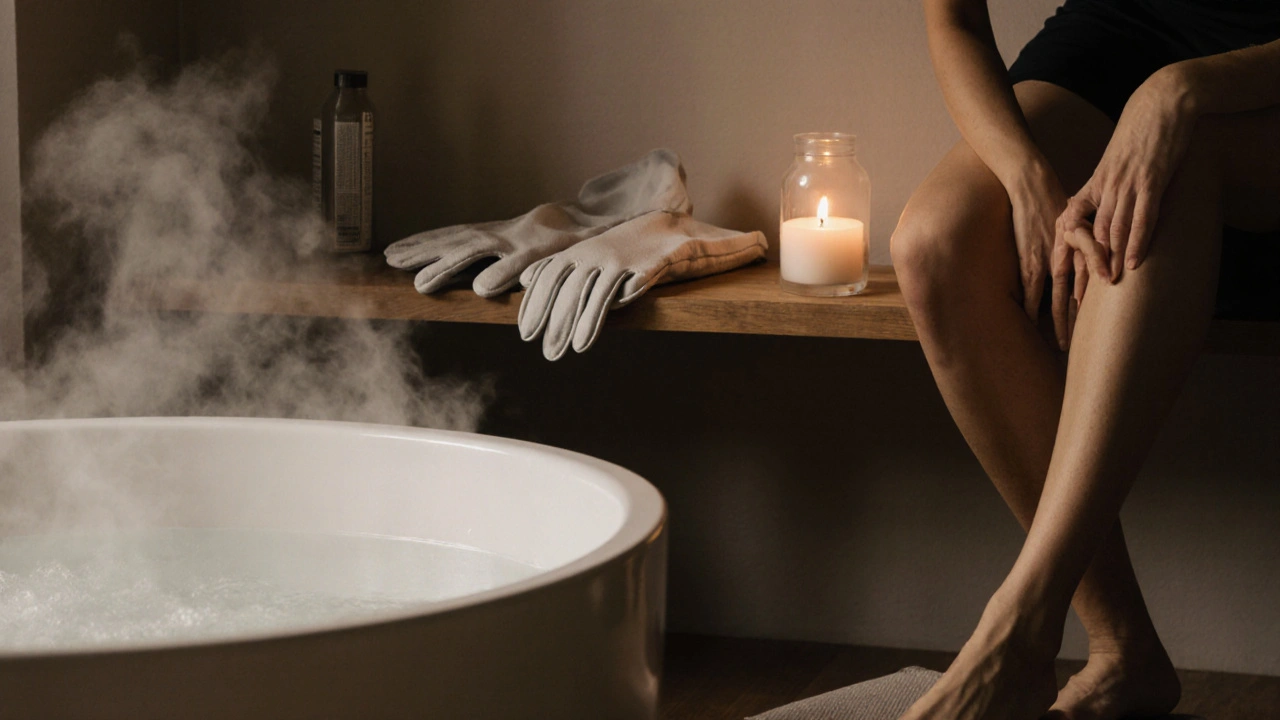
Building a Routine That Lasts
Like brushing your teeth, this works best as a habit. Start with 10-15 minutes, twice a week. Use a timer. Create a quiet space. Light a candle. Play soft music. Make it feel like self-care, not a chore.
After four sessions, many men notice changes: fewer nighttime bathroom trips, less lower back pain, better erections, deeper relaxation. One man in Melbourne told me: ‘I used to wake up three times a night. After six weeks of this, I’m sleeping through. My partner says I’m calmer. I feel like I’ve been holding my breath for ten years-and I just started breathing again.’
It’s not about becoming a sex guru. It’s about reclaiming your body. The prostate isn’t a secret organ. It’s a vital part of your health. And like your heart or your lungs, it deserves care-not fear.
What Comes Next
Once you’re comfortable with the basics, you can explore deeper techniques: partner-assisted massage, tantric breathing, or combining it with pelvic floor exercises. Some men start using prostate massagers-small, curved devices designed for safe, consistent pressure. Others attend workshops with certified sensual therapists.
The goal isn’t to master a technique. It’s to learn to listen. To feel. To let go.
Is prostate massage safe for beginners?
Yes, if done gently and with preparation. Start with external massage and breathing exercises for at least a week before trying internal touch. Use plenty of water-based lube, go slow, and never force anything. If it hurts, stop. Most men find it comfortable after a few sessions.
Can prostate massage help with urinary problems?
Yes. Studies show that regular, gentle prostate massage can reduce symptoms of benign prostatic hyperplasia (BPH) and chronic prostatitis. It improves blood flow, reduces inflammation, and helps drain stagnant fluids from the gland. Many men report fewer urges to pee, less burning, and better flow after 4-6 weeks of consistent practice.
Do I need a partner to do this?
No. You can do it alone. In fact, most men start solo to build comfort and trust with their own body. A partner can help later, especially with technique or emotional support, but it’s not required. The key is your own awareness and patience.
How often should I do prostate massage?
Begin with 1-2 times per week for 10-15 minutes per session. Once you feel comfortable, you can increase to 3-4 times if you enjoy it. Some men do it daily as part of their relaxation routine. Listen to your body. If you feel sore or overstimulated, take a break.
Will prostate massage make me more sensitive or improve my orgasms?
Many men report stronger, fuller orgasms after consistent practice. That’s because the prostate is involved in orgasmic response. When it’s relaxed and well-circulated, signals travel more clearly. You may also notice longer-lasting erections and more full-body sensations. But this takes time. Don’t expect miracles after one session.
Can I do this if I’ve had prostate surgery?
If you’ve had recent prostate surgery-like a prostatectomy or TURP-you should wait at least 6-12 months and get clearance from your doctor. Even then, start very gently. Some men find massage helps with nerve recovery and pelvic floor retraining, but it must be done under professional guidance.

